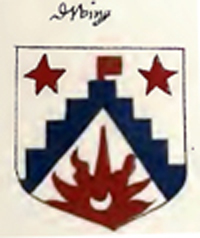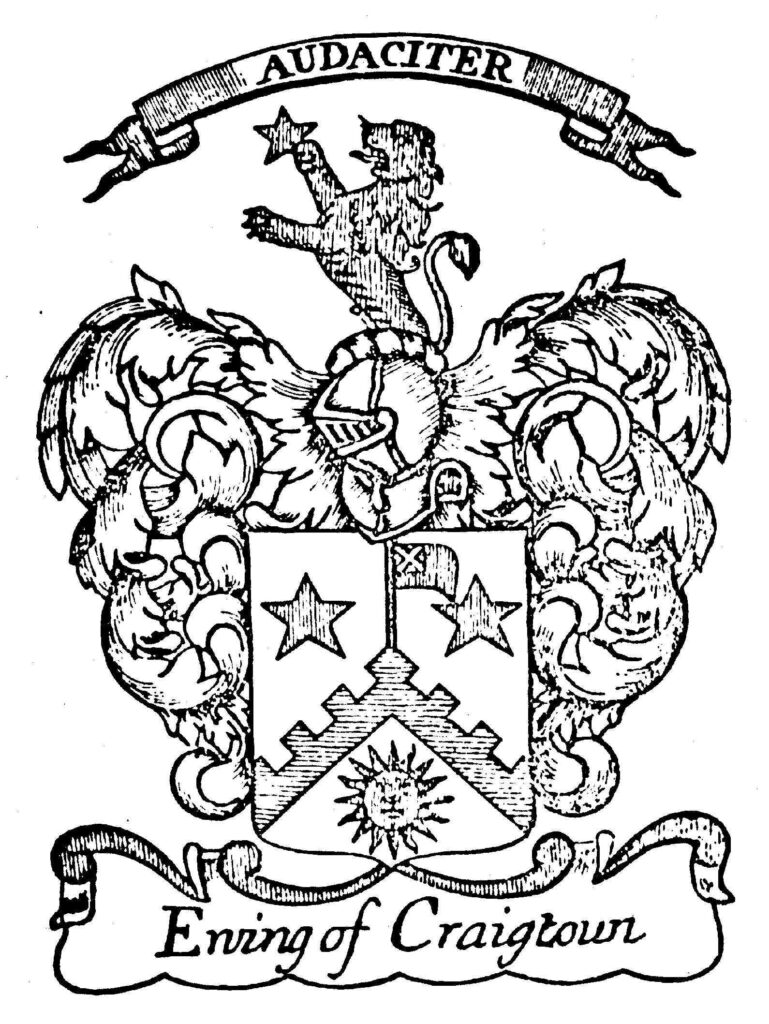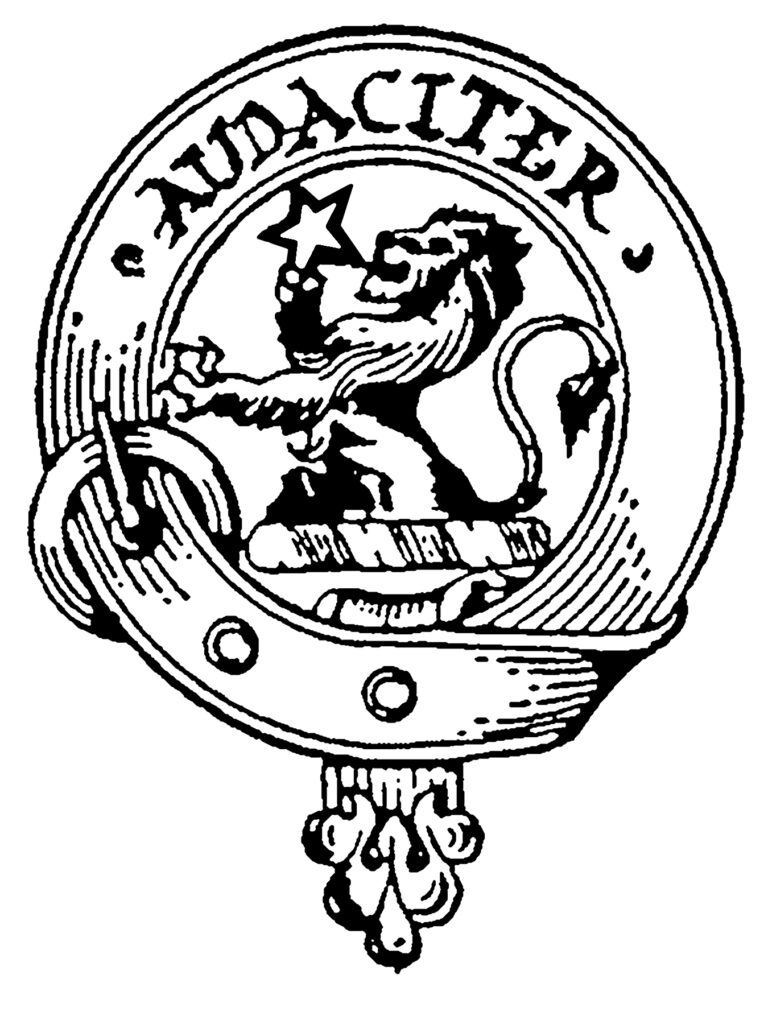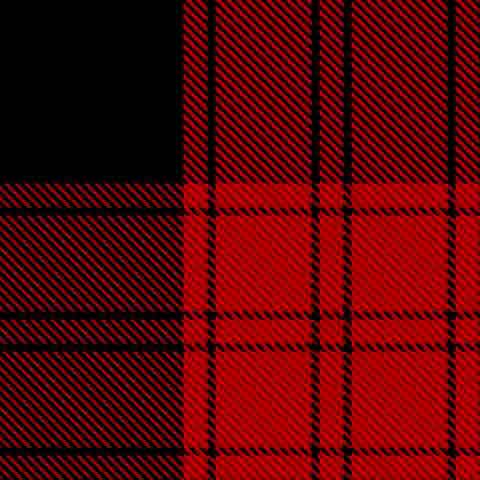Clan Ewing: Heraldry
The heraldic traditions of Clan Ewing go back at least to 1566, when the first Ewing Coat of Arms is recorded in the Workman Armorial. In the same year, one William Ewin (sic.) was summoned to attend the court of Mary Queen of Scots.
A particularly interesting feature of the shield is the flag which sits atop the chevron. In heraldic language, the chevron is said to be ‘ensigned’ – a mark of special favour granted by the sovereign. The Ewing arms are ensigned with the Ensign of Scotland, possibly denoting William Ewing’s appointment as Bearer of the Ensign of Scotland. It is said that one of Queen Mary’s standard bearers was a William Ewing. It seems very likely that the ensignment of William’s shield marks his appointment as the queen’s standard bearer, and shows the flag he carried.

The earliest record of the Ewing Shield is somewhat crudely sketched in the Workman Armorial, 1566 (above). The arms recorded in the Workman Armorial may reflect earlier Ewing shields which would not have been ensigned, but all Ewing Coats of Arms today include the ensignment.
A shield or coat of arms belongs to a particular individual and not to an entire family. In Scottish heraldic tradition, all armigers within any single family bear arms that are clearly similar to each other but marked out by specific differences. Whoever is entitled to bear the undifferenced arms of a Scottish family is described as Chief of the Name and Arms.

The Ewing arms are next recorded in Alexander Nisbet’s A System of Heraldry, 1722 (shown above) where they are listed as the arms of John Ewing of Craigtoun WS, who was the ‘Male-Representer of EWING of KEPPOCH, his Grandfather, in the shire of Dumbarton’. Here the Ewing shield appears along with a crest and motto.
Most clans can be identified by a clan badge, which is based on the crest from the chief’s coat of arms, surrounded by a strap and buckle bearing the chief’s motto. Although the Ewing crest and motto are not recorded before 1722, it’s very likely that they were also included in the original acheivement of arms from 1566. However, because they do not appear in the records of Lyon Court as the crest and motto of the Chief of the Name and Arms of Ewing, they have no official status as a clan badge.
As an armigerous clan, Clan Ewing has no official crest, but all evidence indicates that the traditional crest was the same as that used by the Ewings of Craigtoun and Keppoch, which is shown below.

The crest badge of Ewing of Craigtoun and Keppoch (above) is described as a demi-lion rampant with a star in its dexter (or right) paw; Motto: AUDACITER.
